Top 10 Animals that are Mainly Gray
The Top Ten
1 Koala
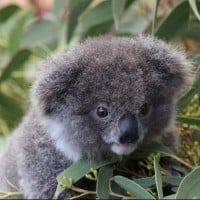 The koala is an arboreal herbivorous marsupial native to Australia. It is the only extant representative of the family Phascolarctidae and its closest living relatives are the wombats.
The koala is an arboreal herbivorous marsupial native to Australia. It is the only extant representative of the family Phascolarctidae and its closest living relatives are the wombats.
 The koala is an arboreal herbivorous marsupial native to Australia. It is the only extant representative of the family Phascolarctidae and its closest living relatives are the wombats.
The koala is an arboreal herbivorous marsupial native to Australia. It is the only extant representative of the family Phascolarctidae and its closest living relatives are the wombats. Google "wet koala" supposedly scary
2 Dolphin
 A dolphin is an aquatic mammal within the infraorder Cetacea. Dolphin species belong to the families Delphinidae (the oceanic dolphins), Platanistidae (the Indian river dolphins), Iniidae (the New World river dolphins), Pontoporiidae (the brackish dolphins), and the extinct Lipotidae (baiji or Chinese ...read more.
A dolphin is an aquatic mammal within the infraorder Cetacea. Dolphin species belong to the families Delphinidae (the oceanic dolphins), Platanistidae (the Indian river dolphins), Iniidae (the New World river dolphins), Pontoporiidae (the brackish dolphins), and the extinct Lipotidae (baiji or Chinese ...read more.
 A dolphin is an aquatic mammal within the infraorder Cetacea. Dolphin species belong to the families Delphinidae (the oceanic dolphins), Platanistidae (the Indian river dolphins), Iniidae (the New World river dolphins), Pontoporiidae (the brackish dolphins), and the extinct Lipotidae (baiji or Chinese ...read more.
A dolphin is an aquatic mammal within the infraorder Cetacea. Dolphin species belong to the families Delphinidae (the oceanic dolphins), Platanistidae (the Indian river dolphins), Iniidae (the New World river dolphins), Pontoporiidae (the brackish dolphins), and the extinct Lipotidae (baiji or Chinese ...read more.
3 Lemur
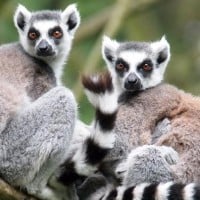 Lemurs are a clade of strepsirrhine primates endemic to the island of Madagascar. The word "lemur" derives from the word lemures (ghosts or spirits) from Roman mythology and was first used to describe a slender loris due to its nocturnal habits and slow pace, but was later applied to the primates on ...read more.
Lemurs are a clade of strepsirrhine primates endemic to the island of Madagascar. The word "lemur" derives from the word lemures (ghosts or spirits) from Roman mythology and was first used to describe a slender loris due to its nocturnal habits and slow pace, but was later applied to the primates on ...read more.
 Lemurs are a clade of strepsirrhine primates endemic to the island of Madagascar. The word "lemur" derives from the word lemures (ghosts or spirits) from Roman mythology and was first used to describe a slender loris due to its nocturnal habits and slow pace, but was later applied to the primates on ...read more.
Lemurs are a clade of strepsirrhine primates endemic to the island of Madagascar. The word "lemur" derives from the word lemures (ghosts or spirits) from Roman mythology and was first used to describe a slender loris due to its nocturnal habits and slow pace, but was later applied to the primates on ...read more.
4 Wolf
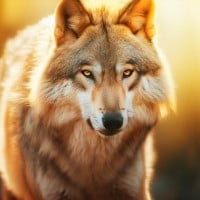 The wolf (Canis lupus), also known as the gray or grey wolf, is a large canine native to Eurasia and North America. Over thirty subspecies of Canis lupus have been recognized, with gray wolves comprising the wild subspecies. As the largest extant member of the Canidae family, the wolf is distinguished... read more
The wolf (Canis lupus), also known as the gray or grey wolf, is a large canine native to Eurasia and North America. Over thirty subspecies of Canis lupus have been recognized, with gray wolves comprising the wild subspecies. As the largest extant member of the Canidae family, the wolf is distinguished... read more
 The wolf (Canis lupus), also known as the gray or grey wolf, is a large canine native to Eurasia and North America. Over thirty subspecies of Canis lupus have been recognized, with gray wolves comprising the wild subspecies. As the largest extant member of the Canidae family, the wolf is distinguished... read more
The wolf (Canis lupus), also known as the gray or grey wolf, is a large canine native to Eurasia and North America. Over thirty subspecies of Canis lupus have been recognized, with gray wolves comprising the wild subspecies. As the largest extant member of the Canidae family, the wolf is distinguished... read more
5 Elephant
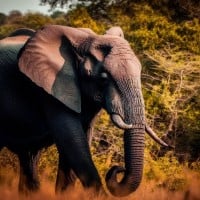 Elephants are the largest existing land animals. Three living species are currently recognised: the African bush elephant, the African forest elephant, and the Asian elephant. They are the only surviving members of the family Elephantidae and the order Proboscidea, extinct relatives include mammoths and mastodons. Distinctive features of elephants include a long proboscis called a trunk, tusks, large ear flaps, pillar-like legs, and tough but sensitive skin. The trunk is used for breathing, bringing food and water to the mouth, and grasping objects. Tusks, which are derived from the incisor teeth, serve both as weapons and as tools for moving objects and digging. The large ear flaps assist in ...read more.
Elephants are the largest existing land animals. Three living species are currently recognised: the African bush elephant, the African forest elephant, and the Asian elephant. They are the only surviving members of the family Elephantidae and the order Proboscidea, extinct relatives include mammoths and mastodons. Distinctive features of elephants include a long proboscis called a trunk, tusks, large ear flaps, pillar-like legs, and tough but sensitive skin. The trunk is used for breathing, bringing food and water to the mouth, and grasping objects. Tusks, which are derived from the incisor teeth, serve both as weapons and as tools for moving objects and digging. The large ear flaps assist in ...read more.
 Elephants are the largest existing land animals. Three living species are currently recognised: the African bush elephant, the African forest elephant, and the Asian elephant. They are the only surviving members of the family Elephantidae and the order Proboscidea, extinct relatives include mammoths and mastodons. Distinctive features of elephants include a long proboscis called a trunk, tusks, large ear flaps, pillar-like legs, and tough but sensitive skin. The trunk is used for breathing, bringing food and water to the mouth, and grasping objects. Tusks, which are derived from the incisor teeth, serve both as weapons and as tools for moving objects and digging. The large ear flaps assist in ...read more.
Elephants are the largest existing land animals. Three living species are currently recognised: the African bush elephant, the African forest elephant, and the Asian elephant. They are the only surviving members of the family Elephantidae and the order Proboscidea, extinct relatives include mammoths and mastodons. Distinctive features of elephants include a long proboscis called a trunk, tusks, large ear flaps, pillar-like legs, and tough but sensitive skin. The trunk is used for breathing, bringing food and water to the mouth, and grasping objects. Tusks, which are derived from the incisor teeth, serve both as weapons and as tools for moving objects and digging. The large ear flaps assist in ...read more. Favorite animal
6 Sloth
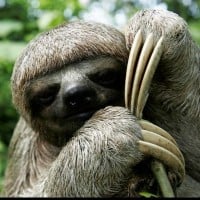 Sloths are mammals classified in the families Megalonychidae and Bradypodidae, including six extant species. Noted for their slowness of movement, they spend most of their lives hanging upside down in the trees of the tropical rainforests of South America and Central America.
Sloths are mammals classified in the families Megalonychidae and Bradypodidae, including six extant species. Noted for their slowness of movement, they spend most of their lives hanging upside down in the trees of the tropical rainforests of South America and Central America.
 Sloths are mammals classified in the families Megalonychidae and Bradypodidae, including six extant species. Noted for their slowness of movement, they spend most of their lives hanging upside down in the trees of the tropical rainforests of South America and Central America.
Sloths are mammals classified in the families Megalonychidae and Bradypodidae, including six extant species. Noted for their slowness of movement, they spend most of their lives hanging upside down in the trees of the tropical rainforests of South America and Central America.
7 Kudu
 The kudus are two species of antelope of the genus Tragelaphus: Lesser kudu, Tragelaphus imberbis, of eastern Africa. Greater kudu, Tragelaphus strepsiceros, of eastern and southern Africa.
The kudus are two species of antelope of the genus Tragelaphus: Lesser kudu, Tragelaphus imberbis, of eastern Africa. Greater kudu, Tragelaphus strepsiceros, of eastern and southern Africa.
 The kudus are two species of antelope of the genus Tragelaphus: Lesser kudu, Tragelaphus imberbis, of eastern Africa. Greater kudu, Tragelaphus strepsiceros, of eastern and southern Africa.
The kudus are two species of antelope of the genus Tragelaphus: Lesser kudu, Tragelaphus imberbis, of eastern Africa. Greater kudu, Tragelaphus strepsiceros, of eastern and southern Africa.
8 Chinchilla
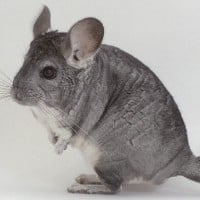 Chinchillas are two species of crepuscular rodents, slightly larger and more robust than ground squirrels. They are native to the Andes mountains in South America and live in colonies called "herds" at high elevations up to 4,270 m.
Chinchillas are two species of crepuscular rodents, slightly larger and more robust than ground squirrels. They are native to the Andes mountains in South America and live in colonies called "herds" at high elevations up to 4,270 m.
 Chinchillas are two species of crepuscular rodents, slightly larger and more robust than ground squirrels. They are native to the Andes mountains in South America and live in colonies called "herds" at high elevations up to 4,270 m.
Chinchillas are two species of crepuscular rodents, slightly larger and more robust than ground squirrels. They are native to the Andes mountains in South America and live in colonies called "herds" at high elevations up to 4,270 m.
9 Raccoon
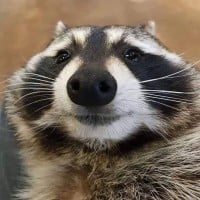 The raccoon, sometimes spelled racoon, also known as the common raccoon, North American raccoon, northern raccoon and colloquially as coon, is a medium-sized mammal native to North America.
The raccoon, sometimes spelled racoon, also known as the common raccoon, North American raccoon, northern raccoon and colloquially as coon, is a medium-sized mammal native to North America.
 The raccoon, sometimes spelled racoon, also known as the common raccoon, North American raccoon, northern raccoon and colloquially as coon, is a medium-sized mammal native to North America.
The raccoon, sometimes spelled racoon, also known as the common raccoon, North American raccoon, northern raccoon and colloquially as coon, is a medium-sized mammal native to North America.
10 Donkey
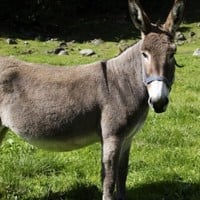 The donkey or ass is a domesticated member of the horse family, Equidae. The wild ancestor of the donkey is the African wild ass, E. africanus. The donkey has been used as a working animal for at least 5000 years.
The donkey or ass is a domesticated member of the horse family, Equidae. The wild ancestor of the donkey is the African wild ass, E. africanus. The donkey has been used as a working animal for at least 5000 years.
 The donkey or ass is a domesticated member of the horse family, Equidae. The wild ancestor of the donkey is the African wild ass, E. africanus. The donkey has been used as a working animal for at least 5000 years.
The donkey or ass is a domesticated member of the horse family, Equidae. The wild ancestor of the donkey is the African wild ass, E. africanus. The donkey has been used as a working animal for at least 5000 years.The Contenders
11 Seal
 Pinnipeds, commonly known as seals, are a widely distributed and diverse clade of carnivorous, fin-footed, semiaquatic, mostly marine mammals in the clade Pinnipedia. They comprise the extant families Odobenidae (whose only living member is the walrus), Otariidae (the eared seals: sea lions and fur ...read more.
Pinnipeds, commonly known as seals, are a widely distributed and diverse clade of carnivorous, fin-footed, semiaquatic, mostly marine mammals in the clade Pinnipedia. They comprise the extant families Odobenidae (whose only living member is the walrus), Otariidae (the eared seals: sea lions and fur ...read more.
 Pinnipeds, commonly known as seals, are a widely distributed and diverse clade of carnivorous, fin-footed, semiaquatic, mostly marine mammals in the clade Pinnipedia. They comprise the extant families Odobenidae (whose only living member is the walrus), Otariidae (the eared seals: sea lions and fur ...read more.
Pinnipeds, commonly known as seals, are a widely distributed and diverse clade of carnivorous, fin-footed, semiaquatic, mostly marine mammals in the clade Pinnipedia. They comprise the extant families Odobenidae (whose only living member is the walrus), Otariidae (the eared seals: sea lions and fur ...read more.
12 Chinese Crested Dog
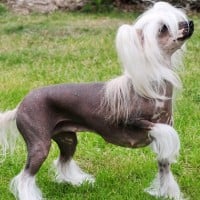 The Chinese crested dog is a hairless breed of dog. Like most hairless dog breeds, the Chinese crested comes in two varieties, with and without fur, which are born in the same litter: the Powder Puff and the Hairless.
The Chinese crested dog is a hairless breed of dog. Like most hairless dog breeds, the Chinese crested comes in two varieties, with and without fur, which are born in the same litter: the Powder Puff and the Hairless.
 The Chinese crested dog is a hairless breed of dog. Like most hairless dog breeds, the Chinese crested comes in two varieties, with and without fur, which are born in the same litter: the Powder Puff and the Hairless.
The Chinese crested dog is a hairless breed of dog. Like most hairless dog breeds, the Chinese crested comes in two varieties, with and without fur, which are born in the same litter: the Powder Puff and the Hairless.
13 Tapir
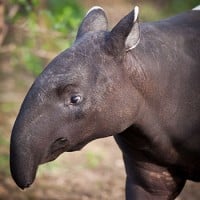 A tapir is a large, herbivorous mammal, similar in shape to a pig, with a short, prehensile nose trunk.
A tapir is a large, herbivorous mammal, similar in shape to a pig, with a short, prehensile nose trunk.
 A tapir is a large, herbivorous mammal, similar in shape to a pig, with a short, prehensile nose trunk.
A tapir is a large, herbivorous mammal, similar in shape to a pig, with a short, prehensile nose trunk.
14 King Kong
 King Kong is a giant movie monster, resembling a colossal ape, that has appeared in various media since 1933. The character first appeared in the 1933 film King Kong, which received universal acclaim upon its initial release and re-releases.
King Kong is a giant movie monster, resembling a colossal ape, that has appeared in various media since 1933. The character first appeared in the 1933 film King Kong, which received universal acclaim upon its initial release and re-releases.
 King Kong is a giant movie monster, resembling a colossal ape, that has appeared in various media since 1933. The character first appeared in the 1933 film King Kong, which received universal acclaim upon its initial release and re-releases.
King Kong is a giant movie monster, resembling a colossal ape, that has appeared in various media since 1933. The character first appeared in the 1933 film King Kong, which received universal acclaim upon its initial release and re-releases.
15 Mouse
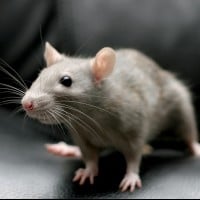 A mouse is a small rodent characteristically having a pointed snout, small rounded ears, a body-length scaly tail and a high breeding rate. The best known mouse species is the common house mouse. It is also a popular pet.
A mouse is a small rodent characteristically having a pointed snout, small rounded ears, a body-length scaly tail and a high breeding rate. The best known mouse species is the common house mouse. It is also a popular pet.
 A mouse is a small rodent characteristically having a pointed snout, small rounded ears, a body-length scaly tail and a high breeding rate. The best known mouse species is the common house mouse. It is also a popular pet.
A mouse is a small rodent characteristically having a pointed snout, small rounded ears, a body-length scaly tail and a high breeding rate. The best known mouse species is the common house mouse. It is also a popular pet.
16 Opossum
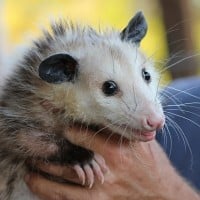

17 Llama
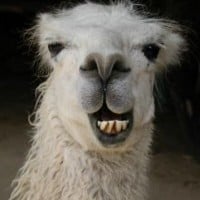 The llama is a domesticated South American camelid, widely used as a meat and pack animal by Andean cultures since the Pre-Columbian era.
The llama is a domesticated South American camelid, widely used as a meat and pack animal by Andean cultures since the Pre-Columbian era.
 The llama is a domesticated South American camelid, widely used as a meat and pack animal by Andean cultures since the Pre-Columbian era.
The llama is a domesticated South American camelid, widely used as a meat and pack animal by Andean cultures since the Pre-Columbian era.
18 Hawk
 Hawks are a group of medium-sized diurnal birds of prey of the family Accipitridae which are widely distributed and varying greatly in size.
Hawks are a group of medium-sized diurnal birds of prey of the family Accipitridae which are widely distributed and varying greatly in size.
 Hawks are a group of medium-sized diurnal birds of prey of the family Accipitridae which are widely distributed and varying greatly in size.
Hawks are a group of medium-sized diurnal birds of prey of the family Accipitridae which are widely distributed and varying greatly in size.
19 Irish Wolfhound


20 Jackals
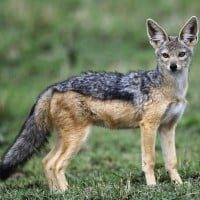 The jackal is a small omnivorous mammal of the genus Canis, which also includes the wolf and dog. While the word "jackal" has historically been used for many small canids, in modern use it most commonly refers to three species: the closely related black-backed jackal and side-striped jackal of sub-Saharan ...read more.
The jackal is a small omnivorous mammal of the genus Canis, which also includes the wolf and dog. While the word "jackal" has historically been used for many small canids, in modern use it most commonly refers to three species: the closely related black-backed jackal and side-striped jackal of sub-Saharan ...read more.
 The jackal is a small omnivorous mammal of the genus Canis, which also includes the wolf and dog. While the word "jackal" has historically been used for many small canids, in modern use it most commonly refers to three species: the closely related black-backed jackal and side-striped jackal of sub-Saharan ...read more.
The jackal is a small omnivorous mammal of the genus Canis, which also includes the wolf and dog. While the word "jackal" has historically been used for many small canids, in modern use it most commonly refers to three species: the closely related black-backed jackal and side-striped jackal of sub-Saharan ...read more.
21 Jackdaws
22 Caribou
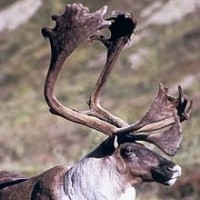 The reindeer, also known as the caribou in North America, is a species of deer with circumpolar distribution, native to Arctic, sub-Arctic, tundra, boreal and mountainous regions of northern Europe, Siberia and North America.
The reindeer, also known as the caribou in North America, is a species of deer with circumpolar distribution, native to Arctic, sub-Arctic, tundra, boreal and mountainous regions of northern Europe, Siberia and North America.
 The reindeer, also known as the caribou in North America, is a species of deer with circumpolar distribution, native to Arctic, sub-Arctic, tundra, boreal and mountainous regions of northern Europe, Siberia and North America.
The reindeer, also known as the caribou in North America, is a species of deer with circumpolar distribution, native to Arctic, sub-Arctic, tundra, boreal and mountainous regions of northern Europe, Siberia and North America.
23 Coyote
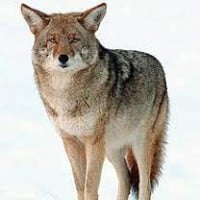 Coyotes are canines native to North and Central America. They are highly adaptable and can thrive in a variety of environments, from forests and grasslands to urban areas. Coyotes have a similar appearance to domestic dogs but are typically smaller in size, with a bushy tail, erect ears, and a pointed muzzle. They are opportunistic omnivores, feeding on a diverse diet that includes small mammals, birds, insects, and even plants. Known for their vocalizations, coyotes communicate using a range of howls, barks, and yips. They play a crucial role in ecosystems by controlling populations of rodents and other small animals.
Coyotes are canines native to North and Central America. They are highly adaptable and can thrive in a variety of environments, from forests and grasslands to urban areas. Coyotes have a similar appearance to domestic dogs but are typically smaller in size, with a bushy tail, erect ears, and a pointed muzzle. They are opportunistic omnivores, feeding on a diverse diet that includes small mammals, birds, insects, and even plants. Known for their vocalizations, coyotes communicate using a range of howls, barks, and yips. They play a crucial role in ecosystems by controlling populations of rodents and other small animals.
 Coyotes are canines native to North and Central America. They are highly adaptable and can thrive in a variety of environments, from forests and grasslands to urban areas. Coyotes have a similar appearance to domestic dogs but are typically smaller in size, with a bushy tail, erect ears, and a pointed muzzle. They are opportunistic omnivores, feeding on a diverse diet that includes small mammals, birds, insects, and even plants. Known for their vocalizations, coyotes communicate using a range of howls, barks, and yips. They play a crucial role in ecosystems by controlling populations of rodents and other small animals.
Coyotes are canines native to North and Central America. They are highly adaptable and can thrive in a variety of environments, from forests and grasslands to urban areas. Coyotes have a similar appearance to domestic dogs but are typically smaller in size, with a bushy tail, erect ears, and a pointed muzzle. They are opportunistic omnivores, feeding on a diverse diet that includes small mammals, birds, insects, and even plants. Known for their vocalizations, coyotes communicate using a range of howls, barks, and yips. They play a crucial role in ecosystems by controlling populations of rodents and other small animals.
24 Snow Leopard
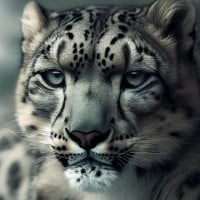 The snow leopard (Panthera uncia), also known as the ounce, is a felid in the genus Panthera native to the mountain ranges of Central and South Asia. It is listed as Vulnerable on the IUCN Red List because the global population is estimated to number fewer than 10,000 mature individuals and is expected ...read more.
The snow leopard (Panthera uncia), also known as the ounce, is a felid in the genus Panthera native to the mountain ranges of Central and South Asia. It is listed as Vulnerable on the IUCN Red List because the global population is estimated to number fewer than 10,000 mature individuals and is expected ...read more.
 The snow leopard (Panthera uncia), also known as the ounce, is a felid in the genus Panthera native to the mountain ranges of Central and South Asia. It is listed as Vulnerable on the IUCN Red List because the global population is estimated to number fewer than 10,000 mature individuals and is expected ...read more.
The snow leopard (Panthera uncia), also known as the ounce, is a felid in the genus Panthera native to the mountain ranges of Central and South Asia. It is listed as Vulnerable on the IUCN Red List because the global population is estimated to number fewer than 10,000 mature individuals and is expected ...read more.
25 Badger
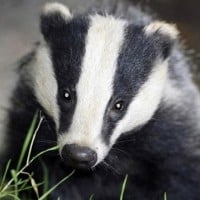 Badgers are short-legged omnivores in the family Mustelidae, which also includes the otters, polecats, weasels and wolverines.
Badgers are short-legged omnivores in the family Mustelidae, which also includes the otters, polecats, weasels and wolverines.
 Badgers are short-legged omnivores in the family Mustelidae, which also includes the otters, polecats, weasels and wolverines.
Badgers are short-legged omnivores in the family Mustelidae, which also includes the otters, polecats, weasels and wolverines.8Load More
PSearch List